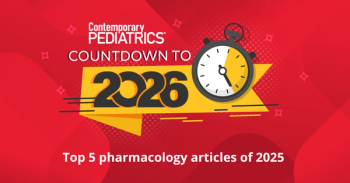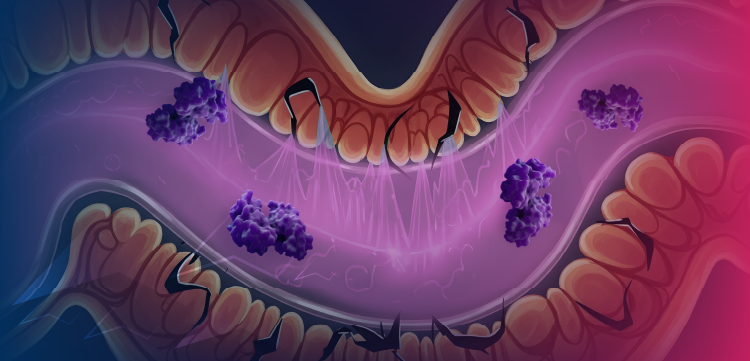
- April 2025
- Volume 41
- Issue 3
Full case study: Urticarial rash in a 9-hours-old male
On exam, the patient is found to have circular, slightly raised, blanching, erythematous papules on the lower extremities and abdomen.
Presentation
A 6-day-old male with history of waxing and waning urticarial rash presents to the general pediatrician’s office for evaluation. The parents describe the rash as red, raised skin lesions that become flat and congregate, lasting several hours to days, resolving without leaving marks and then appearing in new areas. The rash began shortly after birth, and it does not seem to bother the patient. The parents deny any other concerns, including vomiting, fever, joint swelling, oral ulcers, or irritability. The patient is breastfeeding well and has normal urination and bowel movements.
On review of the nursery notes, it appears that at 9-hours of life the patient developed a rash that started as small, blanching, erythematous, circular macules on the legs; gradually increasing in size and number; becoming raised and coalescing to large, diffuse patches on the legs, back, chest, face, and soles that resolved within several hours. The patient was born to a 30-year-old gravida 1 mother at 40-weeks' gestation via spontaneous vaginal delivery. The parents are without consanguinity or family history of autoimmune or inflammatory diseases. The pregnancy was complicated by maternal hypothyroidism and group B Streptococcus positive status, with the mother adequately treated with levothyroxine and intrapartum antibiotics. The mother and the patient both have O-positive blood type with negative antibody screen. All other prenatal labs were unremarkable, there were no perinatal complications, and all routine newborn screens were normal.
On exam, the patient is found to have circular, slightly raised, blanching, erythematous papules on the lower extremities and abdomen (Figure). The patient appears well hydrated and has normal vital signs. Laboratory tests are obtained showing thrombocytosis (platelet count of 560x103/µL [560x109/L] [reference range, 150-390 x103/µL [150-390x109/L]]) with an otherwise unremarkable CBC, borderline elevated ESR of 15mm/hr (reference range, 3-13 mm/hr), elevated CRP of 0.74mg/dL [7.4 mg/L] (reference range, <0.2mg/dL [<2.0 mg/L]) and normal complete metabolic panel. ANA and Sjogren antibodies (SSA and SSB) are negative.
Differential diagnosis
While rashes are extremely common in the newborn period, it is of critical importance to be able to differentiate between benign causes of neonatal rash and causes that may be indicative of more serious pathology such as an infectious or autoimmune process (Table).
In this case, the waxing and waning, migratory rash, raised initial suspicion for erythema toxicum; however, erythema toxicum most often presents at 2 to 3 days of life and this rash was first noted at 9 hours of life. The urticarial-like appearance also raised concern for an allergic reaction, although it seemed very unusual in this age group. The thrombocytosis and elevated inflammatory markers raised concerns for a non-benign etiology, but neonatal infections were less likely given the overall well appearing neonate. The general pediatrician suspected an immune mediated process such as neonatal lupus. Further literature search for etiologies of neonatal urticaria also raised concerns for an autoinflammatory disease, prompting a rheumatology consult.
Actual diagnosis
With concern for a Cryopyrin Associated Periodic Syndrome, specifically Muckle Wells syndrome and/or Neonatal Onset Multisystem Inflammatory Disease (NOMID), genetic testing is obtained (Invitae Periodic Fever Syndromes Panel) demonstrating D303G mutation in the NLRP3 gene. Based on the genetic mutation and clinical presentation, the patient is diagnosed with Neonatal Onset Multisystem Inflammatory Disease (NOMID), an IL-1 mediated autoinflammatory disease which is part of the Cryopyrin Associated Periodic Syndromes.
NOMID (also known as CINCA; Chronic Infantile Neurological Cutaneous and Articular syndrome) is a rare periodic fever syndrome associated with significant morbidity that increases with diagnosis and treatment delays. It is the most severe and rare form of the Cryopyrin Associated Periodic Syndromes (CAPS), with an estimated total of around 100 cases described in the literature. Around 50-65 percent of NOMID cases result from de novo mutations.1 CAPS are a set of autoinflammatory conditions characterized by chronic systemic inflammation caused by abnormal regulation of the innate immune system; this spectrum affects 1-2 persons per 1 million.2 The less severe forms of CAPS include Familial Cold Autoinflammatory Syndrome and Muckle-Wells Syndrome.
NOMID is a subtype of CAPS caused by a gain-of-function mutation in the gene encoding NLRP3 (cryopyrin) protein.3 This mutation results in an increase in the activity of NLRP3 protein which functions as a danger sensor and undergoes activation in response to Pathogen-Associated Molecular Patterns (PAMPs) and Danger-Associated Molecular Patterns (DAMPs).4 Once triggered, NLRP3 interacts with other intracellular proteins to form the cryopyrin inflammasome, a key player in IL-1β pathway activation. The gain-of-function mutation leads to uncontrolled release of IL-1β and an inappropriately increased innate immune response.5
The presentation of NOMID includes multisystem involvement secondary to overactivation of the innate immune response. The most prevalent findings include fever, urticarial skin rash, and arthropathy of the large joints.6 In addition, patients often develop characteristic facies including frontal bossing, increased cephalic index, and saddle-back nose. If left untreated, chronic unregulated innate immune system activation leads to sensorineural hearing loss;3 uveitis and vision loss;7 progressive chronic meningitis and increased intracranial pressure leading to developmental delay, intellectual disability, and seizures;8 degenerative arthropathy with joint contractures;6 and AA amyloidosis leading to renal failure.9
Clinical evaluation/ treatment
The evaluation of NOMID consists of laboratory and imaging studies to quantify the extent of disease involvement. The laboratory findings in NOMID patients may include leukocytosis, anemia of chronic disease, and elevation in acute phase reactants including ESR and CRP. Elevated cytokine levels and serum amyloid A levels may serve as more sensitive markers of disease activity. While non-specific, these laboratory findings can also be used to track disease activity.10 In addition, molecular analysis of the NLRP3 gene serves as the most specific laboratory test, although a significant portion of NOMID patients may have somatic mosaicism.11 Imaging studies should include skeletal imaging to assess for and quantify joint involvement. In addition, brain MRI, EEG, and lumbar puncture can be useful in elucidating the extent of neurological involvement and verifying adequate disease control. As sensorineural hearing loss affects greater than half of NOMID patients3, baseline and routine audiologic screening is imperative. Slit lamp eye exam screening for intra-ocular inflammation is important as well.
Management of NOMID includes treatment with medications that block IL-1 activity and close monitoring of clinical sequelae. Anakinra, an IL-1 receptor antagonist, given as daily subcutaneous injections, is currently the only FDA approved medication for the treatment of NOMID. Longer acting IL-1 blockers including rilonacept and canakinumab that allow weekly or monthly subcutaneous dosing are available and approved for treatment of the milder forms of CAPS; however, they may be suboptimal for the treatment of NOMID due to unclear CNS penetrance. The long-term safety and efficacy of anakinra were described in two studies conducted in Italy and France which suggest that the medication is safe for long term use and dramatically reduces disease-associated morbidity.12,13 Of note, the severity of intellectual disability associated with NOMID is proportional to the time to start IL-1 treatment; thus, early initiation of treatment is extremely important in minimizing morbidity. Despite adequate treatment with anakinra and well-controlled symptoms with minimal systemic inflammation, patients may still develop sensorineural hearing loss; therefore, frequent audiologic evaluation is critical in patients with NOMID.
Patient course
After consultation and evaluation by the rheumatology service, daily subcutaneous anakinra treatment was initiated at 11-weeks of age, with complete resolution of the rash within hours of the first injection. Inflammatory markers subsequently normalized, ocular exam showed no signs of intraocular inflammation, and serial hearing tests remained normal. At 4 months of age, the patient underwent further testing to verify adequate CNS disease control. This included brain MRI with and without contrast that was normal; 24-hours video electroencephalography that demonstrated no epileptiform discharges or clinical events; and lumbar puncture that showed normal opening pressure, no CSF pleocytosis, and normal CSF cytokine profile. All these reassuring studies indicated adequate disease control.
After starting anakinra treatment, the patient demonstrated a significant increase in weight percentiles from the 30th to the 90th percentile, indicating that even though his initial weight gain appeared adequate, it was apparently suboptimal. The patient is following routinely with primary care pediatrics, rheumatology, ophthalmology, and audiology, who are monitoring for development of sensorineural hearing loss, ocular inflammation, skeletal abnormalities, and developmental delay. The team is vigilantly observing for unexplained fever, rash, skeletal deformities, irritability, or vomiting that could suggest chronic meningitis, seizures, or concerns of hearing or vision loss.
Discussion
Neonatal Onset Multisystem Inflammatory Disease (NOMID) is the most severe subtype of Cryopyrin Associated Periodic Syndromes in which a gain of function mutation in the NLRP3 gene leads to overproduction of IL-1β, overactivation of the innate immune system, and multisystem dysfunction secondary to chronic inflammation. NOMID may present with an early-onset urticarial rash, growth disturbances, developmental delay, irritability, seizures, hearing loss, ocular inflammation, and arthropathy these can occur with or without the presence of fever. Furthermore, early urticarial rash in the neonatal period is extremely unusual and should alert the clinician to consider rare diagnoses such as NOMID where early initiation of IL-1 targeting therapies such as anakinra, is critical in alleviating disease symptoms and decreasing the risk for long term morbidity. In conclusion, it is critical for the general pediatricians to be able to distinguish between common and benign neonatal rashes from atypical rashes that may indicate infection or serious autoinflammatory diseases, including NOMID.
References:
1. Aksentijevich I, Nowak M, Mallah M, et al. De novo CIAS1 mutations, cytokine activation, and evidence for genetic heterogeneity in patients with neonatal-onset multisystem inflammatory disease (NOMID): a new member of the expanding family of pyrin-associated autoinflammatory diseases. Arthritis Rheum. 2002;46(12):3340-3348. doi:10.1002/art.10688
2. Hoffman HM. Rilonacept for the treatment of cryopyrin-associated periodic syndromes (CAPS). Expert Opin Biol Ther. 2009;9(4):519-531. doi:10.1517/14712590902875518
3. Ahmadi N, Brewer CC, Zalewski C, et al. Cryopyrin-associated periodic syndromes: otolaryngologic and audiologic manifestations. Otolaryngol Head Neck Surg. 2011;145(2):295-302. doi:10.1177/0194599811402296
4. Martinon F, Pétrilli V, Mayor A, Tardivel A, Tschopp J. Gout-associated uric acid crystals activate the NALP3 inflammasome. Nature. 2006;440(7081):237-241. doi:10.1038/nature04516
5. Martinon F, Burns K, Tschopp J. The inflammasome: a molecular platform triggering activation of inflammatory caspases and processing of proIL-beta. Mol Cell. 2002;10(2):417-426. doi:10.1016/s1097-2765(02)00599-3
6. Levy R, Gérard L, Kuemmerle-Deschner J, et al. Phenotypic and genotypic characteristics of cryopyrin-associated periodic syndrome: a series of 136 patients from the Eurofever Registry. Ann Rheum Dis. 2015;74(11):2043-2049. doi:10.1136/annrheumdis-2013-204991
7. Dollfus H, Häfner R, Hofmann HM, et al. Chronic infantile neurological cutaneous and articular/neonatal onset multisystem inflammatory disease syndrome: ocular manifestations in a recently recognized chronic inflammatory disease of childhood. Arch Ophthalmol. 2000;118(10):1386-1392. doi:10.1001/archopht.118.10.1386
8. Sibley CH, Plass N, Snow J, et al. Sustained response and prevention of damage progression in patients with neonatal-onset multisystem inflammatory disease treated with anakinra: a cohort study to determine three- and five-year outcomes. Arthritis Rheum. 2012;64(7):2375-2386. doi:10.1002/art.34409
9. Lane T, Loeffler JM, Rowczenio DM, et al. AA amyloidosis complicating the hereditary periodic fever syndromes. Arthritis Rheum. 2013;65(4):1116-1121. doi:10.1002/art.37827
10. Federici S, Sormani MP, Ozen S, et al. Evidence-based provisional clinical classification criteria for autoinflammatory periodic fevers. Ann Rheum Dis. 2015;74(5):799-805. doi:10.1136/annrheumdis-2014-206580
11. Sarrabay G, Grandemange S, Touitou I. Diagnosis of cryopyrin-associated periodic syndrome: challenges, recommendations and emerging concepts. Expert Rev Clin Immunol. 2015;11(7):827-835. doi:10.1586/1744666X.2015.1047765
12. Lepore L, Paloni G, Caorsi R, et al. Follow-up and quality of life of patients with cryopyrin-associated periodic syndromes treated with Anakinra. J Pediatr. 2010;157(2):310-315.e1. doi:10.1016/j.jpeds.2010.02.040
13. Neven B, Marvillet I, Terrada C, et al. Long-term efficacy of the interleukin-1 receptor antagonist anakinra in ten patients with neonatal-onset multisystem inflammatory disease/chronic infantile neurologic, cutaneous, articular syndrome. Arthritis Rheum. 2010;62(1):258-267. doi:10.1002/art.25057
Articles in this issue
11 months ago
FDA approves GSK's meningococcal ABCWY vaccineNewsletter
Access practical, evidence-based guidance to support better care for our youngest patients. Join our email list for the latest clinical updates.








